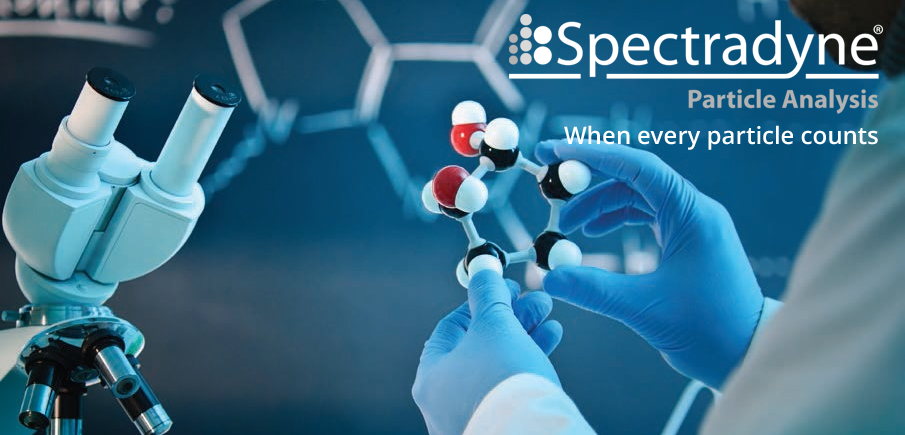


With new analysis cartridges soon to be commercially released, Spectradyne has now demonstrated particle size and concentration measurements as small as 35 nm and as large as 10 microns in diameter. The new cartridges are fully compatible with existing instrumentation, enabling Spectradyne's customers to expand the accessible size range of their instruments for no additional cost. With these developments, the overall ranges of particle size and concentration accessible by the nCS1TM will surpass those of any single-nanoparticle measurement technology currently available. Interested in measuring particles in this new expanded range? Contact us now for pre-release products!
This year the value of Spectradyne's technology has been featured in many refereed articles, including peer-reviewed articles by leading industrial scientists from Bristol-Meyers Squibb (Pennington, NJ), Coriolis Pharma (Munich, Germany), and Academic Medical Center (Amsterdam, Netherlands). In a comparison of Spectradyne's microfluidic resistive pulse sensing (MRPS) technique with nanoparticle tracking analysis (NTA), resonant mass measurement (RMM) and dynamic light scattering (DLS), Coriolis' Adam Grabarek found that MRPS delivered the highest resolution sizing and the broadest dynamic range in concentration of all the techniques. Testing a broad range of sample types, Grabarek also found that "MRPS proved to be the only analytical technique able to characterize both bacteria and liposomes."
A. D. Grabarek, D. Weinbuch, W. Jiskoot, A. Hawe, J. Pharm. Sci. doi 10.1016/j.xphs.2018.08.020 (2018)
G. V. Barnett, J. M. Perhacs, T. K. Das, S. R. Kar, Pharm. Res. 35, 58 (2018)
Z. Varga et al., J. Thrombosis and Haeomostasis 16, 1646-1655 (2018)
Researchers are increasingly aware of the inherent sensitivity limitations of light scattering-based particle characterization technologies such as NTA. These limitations are due to the strong decrease in the intensity of scattered light with particle diameter, scaling with diameter to the sixth power. Fewer scientists are aware, however, that NTA's limit of detection varies strongly with the polydispersity of the sample itself. We demonstrate this issue using a set of samples composed of polystyrene nanoparticles, here.

Spectradyne is happy to announce a new partnership with Particle Technology Labs to provide particle analysis services using the nCS1TM. Particle Technology Labs is a premier analytical testing facility located in Downers Grove, Illinois, that is ISO certified to provide a broad array of measurement services. The partnership will expand access to the powerful insights Spectradyne's technology delivers and provide a low barrier to entry for researchers who are new to Microfluidic Resistive Pulse Sensing (MRPS) to discover it for themselves.
Contact us to learn how to get your samples measured at PTL!
Spectradyne is pleased to announce it has been awarded a competitive SBIR Phase IIB grant from the National Science Foundation. Franklin Monzon, Chief Operating Officer at Spectradyne and Principle Investigator on the grant describes the project he designed: "The focus of this work will be to further improve the nCS1TM user experience and to broaden the utility of the technology to new markets. The technical developments planned in this project will make the nCS1TM even faster, even easier to use, and even more broadly impactful for pharmaceutical and other applications." Read the press release.
